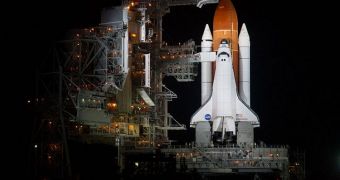Though it was originally supposed to last for less than 48 hours, the delay affecting space shuttle Endeavour's final mission has now been extended to more than 17 days. NASA officials have just announced that the orbiter will not take off before May 16 at the earliest.
Over the past week, the mission saw its launch date being pushed further and further apart nearly every day. Mission controllers at the space agency did so again during a meeting they had on Friday, May 6.
The new delay is meant to provide engineering teams at the NASA Kennedy Space Center (KSC), in Florida, with sufficient team to conduct the necessary verifications of all shuttle systems. Repairs have already been completed, but they now need to be put through their paces.
“Space shuttle Endeavour will launch no earlier than Monday, May 16 at 8:56 am EDT” [1256 GMT], officials at the American space agency announced via their Twitter feed. Repair efforts will continue throughout this weekend.
On Monday (May 9), mission managers, engineers and officials will meet again, and assess Endeavour's status and readiness level. If all is deemed in order, May 16 may be established as the final launch date for the orbiter's last flight.
Experts say that the reason the shuttle could not launch on April 29 is a broken control box, which is in charge of sending current to two heaters located around a critically-important power unit, in the aft compartments of Endeavour.
This unit is one of the three power sources that the spacecraft's hydraulic systems are using during atmospheric reentry and landing. Without it, experts cannot guarantee the safety of the mission.
On Wednesday, May 4, KSC engineers replaced the damaged box, called the Load Control Assembly-2 (LCA-2), with a new one, which means that the problem should now be taken care of. However, a number of tests need to be conducted before the shuttle is cleared for launch.
“Technicians are trying to determine what caused the power box to fail. Initial testing from yesterday shows a driver (circuit) inside the LCA-2 shorted out,” NASA said in a recent press release.
“Managers will continue to evaluate the repair process and make any additional adjustments before scheduling Endeavour’s next launch attempt […]” the document went on to say.
Endeavour is headed to the International Space Station carrying the $1.5 billion Alpha Magnetic Spectrometer (AMS) particle detector, which is the most expensive scientific experiment ever sent to low-Earth orbit.
Once it finishes its 14-day mission, the shuttle will return to the KSC, get processed, and then sent to the California Science Center in Los Angeles for permanent display, Space reports.

 14 DAY TRIAL //
14 DAY TRIAL //